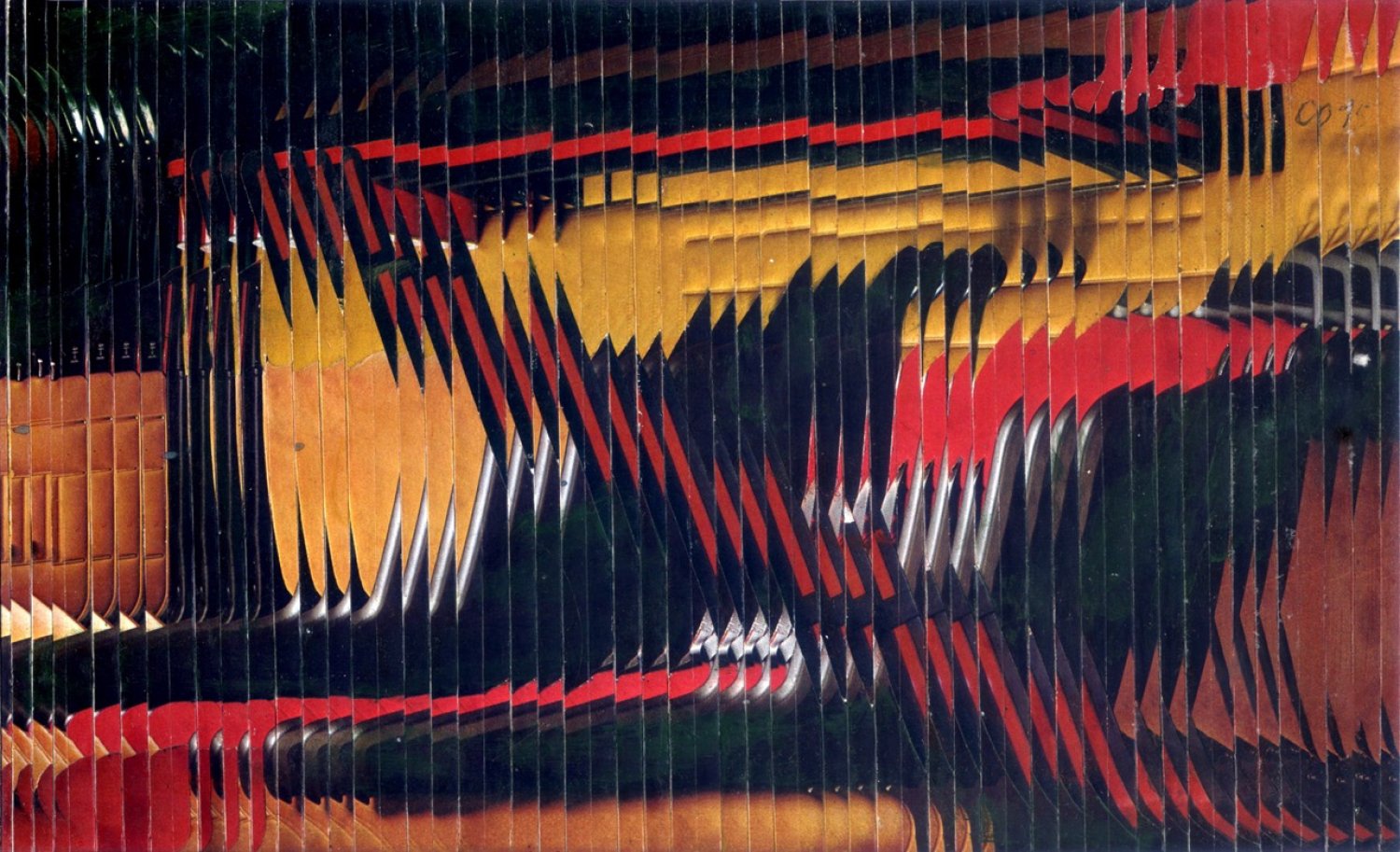Carl Plate
PMC 39, 1975
magazine paper collage on card
20.0
x 32.3
cm
initialled & dated 'CP ‘75' (upper right)
Provenance
The Estate of Carl Plate
Carl Plate catalogue no.796/75
Exhibited
Carl Plate Collage 1938-1976, Hazelhurst Regional Gallery & Arts Centre, Sydney, 28 March – 3 May 2009, cat. 58
Sydney 6, Newcastle Art Gallery, Newcastle, 8 May-2 August 2015
Literature
D Thomas, C Plate, J Plate, ADS Donaldson, Carl Plate Collage 1938-1976, Hazelhurst Regional Gallery & Arts Centre, Sydney, 2009, illus. p.58
"Against their combination of numerous individual elements Plate’s strip collage effect a singularity, a seamlessness made up of a hundred cuts. They might remind us of Jean-Luc Godard’s jump cut, said to have affected the cinematic equivalent of Cubism.
Plate produced this series of work more or less in the proportion of a cinema screen, or in terms of painting he adopted the horizontal ‘landscape’ format. They are at once singular, even gestalt, and at the same time faceted, fragmented and disjointed. The impression the work gives is at once speedy and slow, but the process of course had been laborious. It is one of the strip collages’ most remarkable qualities that Plate was able to create such a dynamic image with so mechanical a means." (A D S Donaldson, 'The Visible coming to the Aid of the Non-Visible - The Collage of Carl Plate', Carl Plate Collage 1938-1976, Hazelhurst Regional Gallery & Arts Centre, Sydney, exh. cat., 2009, p.66

Soft, gently ragged masses emerged from an atmospheric matrix, fluctuating quietly, while lines strayed across them as if looking for the contours of a landscape form. Shifts of rhythm were given by clusters of leaf-like shapes, breaking away from their parent masses. The colours, bluish greens, browns, whites and elegiac greys – gave a calm face to images beneath which an implied world stirred uneasily. (Robert Hughes, The Art of Australia, Penguin Books, 1984, pp. 294-95.)
Returning from Europe after the Second World War, Carl Plate developed a profile as one of Sydney’s leading art world figures. A painter and collagist, he also ran the Notanda Gallery, an exhibition space and bookstore that served as a pivotal location for introducing contemporary art to Australia from Europe and the United States.
Inspired by encounters with Dada and Surrealist art and his travels through Europe and the Americas, Plate developed a style that was abstract, but with a dream-like undercurrent. He deployed colour to great effect, using a mostly reserved palette, though there are moments of vibrancy that attract the eye. At the same time, drawing was an integral component of Plate’s practice. “Colour,” he wrote in 1957, “although a joy to man’s soul, plays but a minor role in drawing, if it plays any role at all. The strength of drawing lies in its purity. Its purity makes it the most direct and personal of all forms of graphic expression.” This balance of opposites is a recurring feature in Plate’s work, which Bernard Smith felt “occupies a central, almost classical position between the linearists and the tonalists”.
Carl Plate exhibited extensively throughout his life alongside running the Notanda Gallery. In 1961, he was one of the “Sydney 9” group of abstract artists, exhibiting alongside John Olsen and William Rose. In 2006-07, the Art Gallery of New South Wales exhibited examples of Plate’s works from their collection. In 2009, an exhibition of his prolific collage works, ‘Carl Plate: Collage, 1938-1976’ was staged at the Hazelhurst Regional Gallery and Arts Centre. His work is represented in state and national collections in Australia, and in private collections in Australia, Europe and the United States.